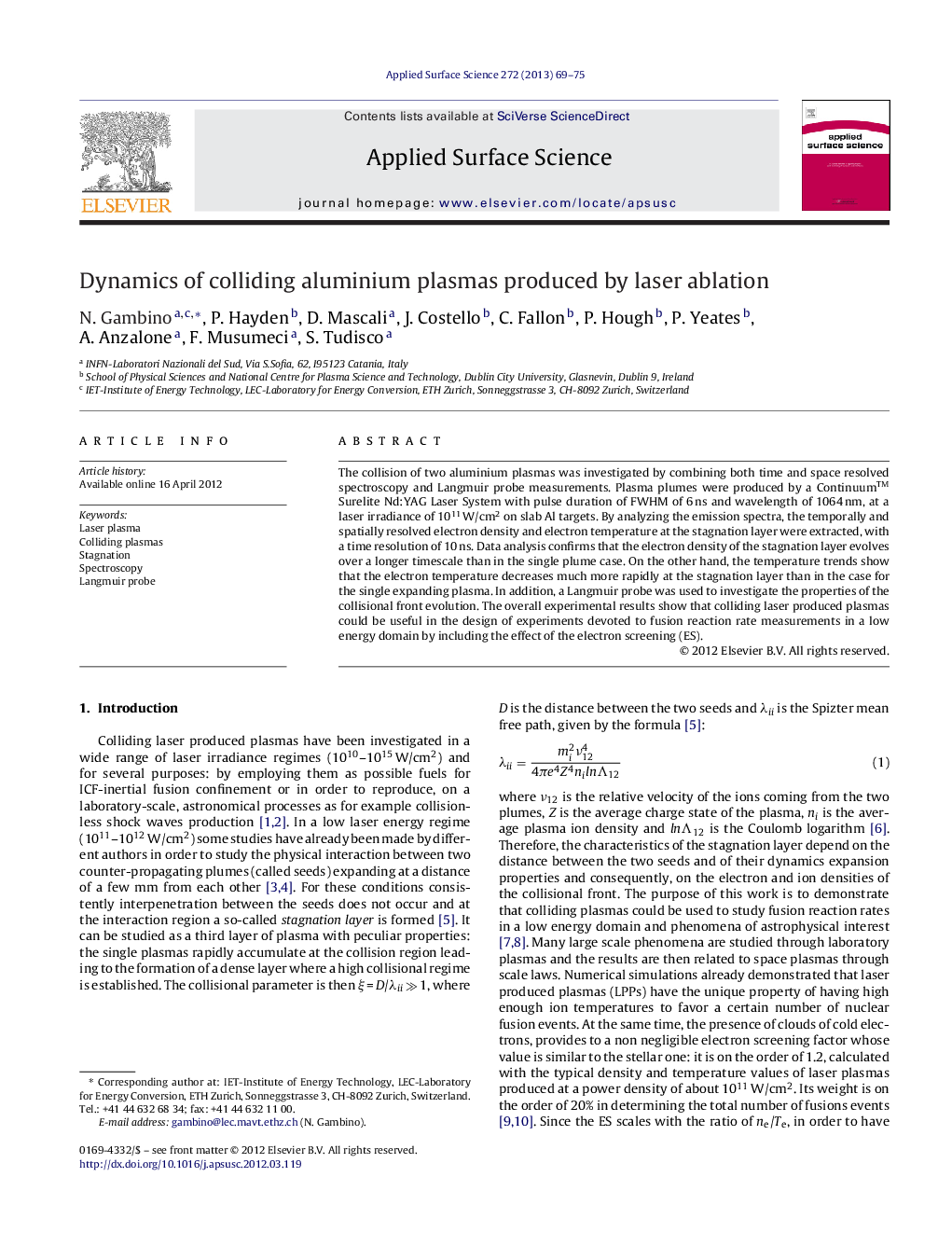| Article ID | Journal | Published Year | Pages | File Type |
|---|---|---|---|---|
| 5354971 | Applied Surface Science | 2013 | 7 Pages |
Abstract
The collision of two aluminium plasmas was investigated by combining both time and space resolved spectroscopy and Langmuir probe measurements. Plasma plumes were produced by a Continuum⢠Surelite Nd:YAG Laser System with pulse duration of FWHM of 6 ns and wavelength of 1064 nm, at a laser irradiance of 1011 W/cm2 on slab Al targets. By analyzing the emission spectra, the temporally and spatially resolved electron density and electron temperature at the stagnation layer were extracted, with a time resolution of 10 ns. Data analysis confirms that the electron density of the stagnation layer evolves over a longer timescale than in the single plume case. On the other hand, the temperature trends show that the electron temperature decreases much more rapidly at the stagnation layer than in the case for the single expanding plasma. In addition, a Langmuir probe was used to investigate the properties of the collisional front evolution. The overall experimental results show that colliding laser produced plasmas could be useful in the design of experiments devoted to fusion reaction rate measurements in a low energy domain by including the effect of the electron screening (ES).
Related Topics
Physical Sciences and Engineering
Chemistry
Physical and Theoretical Chemistry
Authors
N. Gambino, P. Hayden, D. Mascali, J. Costello, C. Fallon, P. Hough, P. Yeates, A. Anzalone, F. Musumeci, S. Tudisco,
